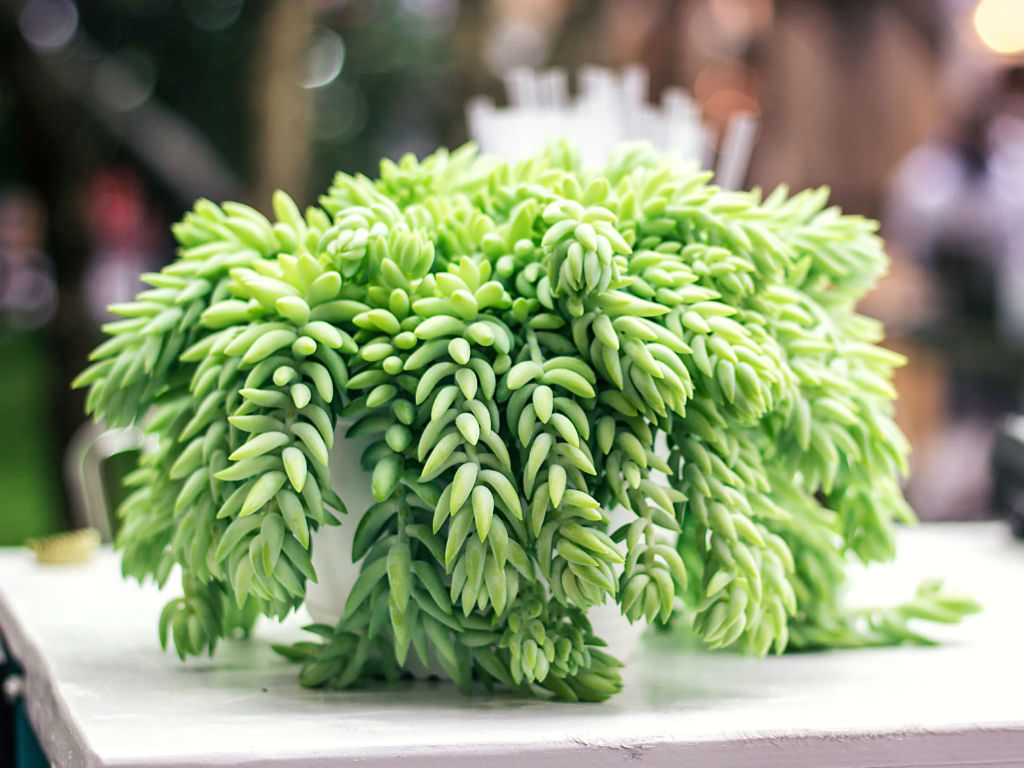Scientific Name
Sedum morganianum E. Walther
Common Name(s)
Burro's Tail, Donkey's Tail, Horse's Tail, Lamb's Tail
Scientific Classification
Family: Crassulaceae
Subfamily: Sempervivoideae
Tribe: Sedeae
Genus: Sedum
Description
Sedum morganianum is a beautiful succulent with many stems covered with thick fleshy glaucous blue-green leaves. The stems arise from the base and grow up to 3.3 feet (1 m) long at first erect, becoming pendant. Leaves are lance-shaped, up to 0.8 inches (2 cm) long, and up to 0.3 inches (0.8 cm) in diameter. This species resembles its relative, Sedum burrito, but has longer and pointier leaves.
Flowers are purplish-pink to reddish-purple and appear in spring arranged in pendant clusters at the ends of the longest stems.
Origin
Sedum morganianum is native to Mexico (central Veracruz).
Etymology
The specific epithet "morganianum (mor-gan-ee-AY-num)" honors Dr. Meredith Walter Morgan (1887-1957), a hobbyist and expert grower from Richmond, California.

How to Grow and Care for Sedum morganianum
Light: These succulents grow best in locations where they will enjoy the full sun for at least six or more hours per day. Most species will tolerate partial shade but will not thrive in deep shade.
Soil: Sedums do not like to sit in waterlogged soil, so drainage is essential to prevent root rot. Choose a gritty, well-draining soil.
Hardiness: Sedum morganianum can withstand temperatures as low as 30 to 50 °F (-1.1 to 10 °C), USDA hardiness zones 10a to 11b.
Watering: Sedum plants are drought-tolerant but do need some water. They do their best with regular watering from spring through fall. Water thoroughly and wait for the soil to dry out before watering again.
Fertilizing: A balanced organic fertilizer each spring is generally all Sedums require. As long as the plants are divided annually and provided with fresh soil, feeding is unnecessary.
Repotting: Sedums in containers require little more care than those in gardens. Repot your plants when they outgrow their current pot by moving them out to a larger container to hold the plant better.
Propagation: Once you have one Sedum, it is easy to make more by taking stems or leaf cuttings and dividing the plant. Sedums are also easy to grow from seed.
Learn more at How to Grow and Care for Sedum.
Toxicity of Sedum morganianum
Sedums are not listed as toxic for people but can be mildly toxic to pets and children.
Forms and Hybrids
Links
- Back to genus Sedum
- Succupedia: Browse succulents by Scientific Name, Common Name, Genus, Family, USDA Hardiness Zone, Origin, or cacti by Genus
Photo Gallery
Click on a photo to see a larger version.



